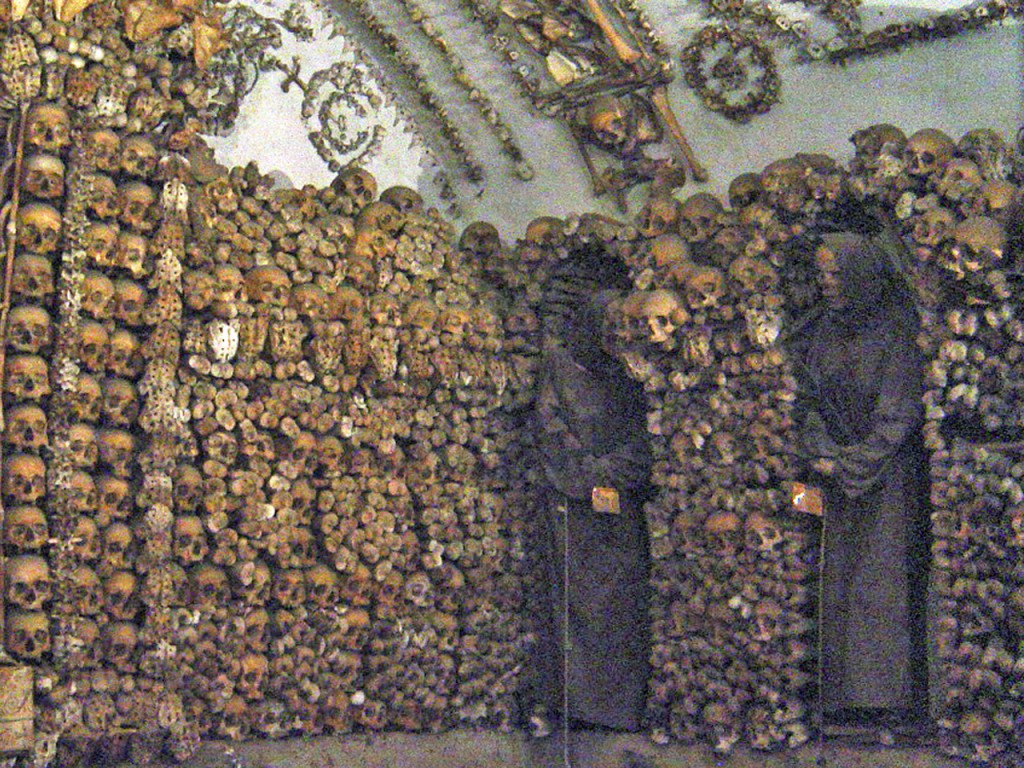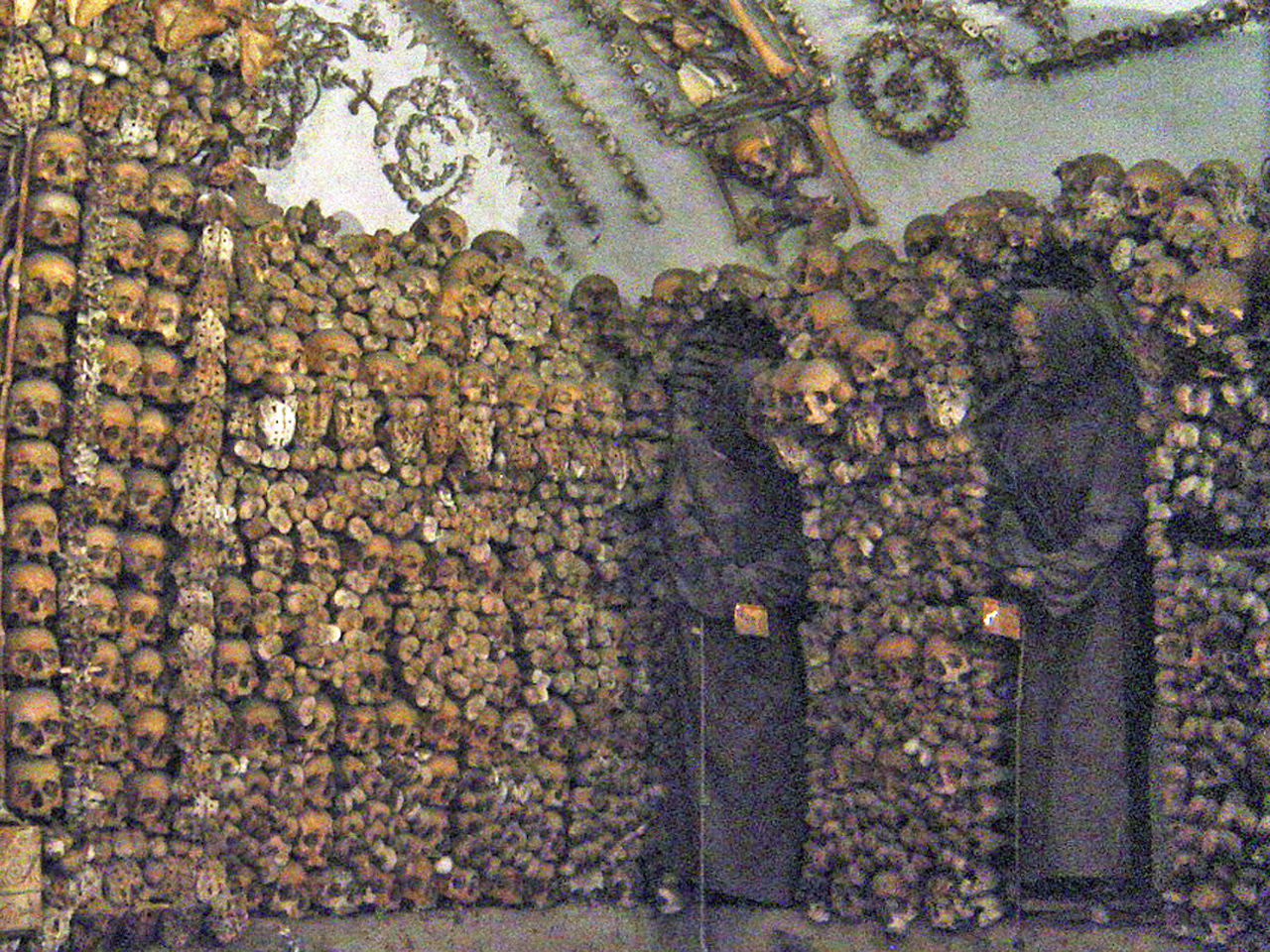
If your Halloween experience was not all you had hoped for, consider spending next year in Rome’s “Capuchin Crypt.” This so-called “Bone Church” is, without a doubt, the most haunting chapel in the world.
The Capuchin friars split from the Franciscans in 1520 to restore what they considered St. Francis’ lost ideals of poverty and service, adopting the brown robes and pointed hoods associated with the poor. In about 1631, the Capuchins left their monastery near Rome’s Trevi Fountain and moved to the Capuchin Church of the Immaculate Conception, carrying with them 300 carts filled with the disinterred bones of deceased friars.
For reasons still unknown, the Capuchin friars did not rebury their departed colleagues, but instead arranged their bones in intricate patterns along the walls and ceilings of a small chapel beneath the church. As friars died, survivors added their bones to the elaborate displays. The larger bones were arranged by type, creating a pelvis room, a leg and thigh bone room and a room of skulls. Smaller bones became floral and geometric designs, wall clocks and chandeliers. In some rooms, intact skeletons were propped upright and covered with musty robes, eerily recalling the Grim Reaper. When the practice stopped in 1870, the chapel walls and ceilings were covered with more than 500,000 bones of 3,700 Capuchins from all over the world and the Italian poor they had served.
The earliest known description of the Capuchin Crypt comes from the Marquis de Sade, who wrote after a visit in 1775 that it was “worthy of an English mind” and he had never “seen anything more impressive.” In the nineteenth century, the crypt was open to the public only during the week following All Souls Day, two days after Halloween.
Today, the Capuchin Crypt is open year round (except Thursdays) to promote the sobering Capuchin message that time is running out for each of us to help the poor. Near the last room is a sign in five languages reading, “What you are now, we once were; what we are now, you shall be.” If that thought doesn’t scare you, nothing will.



